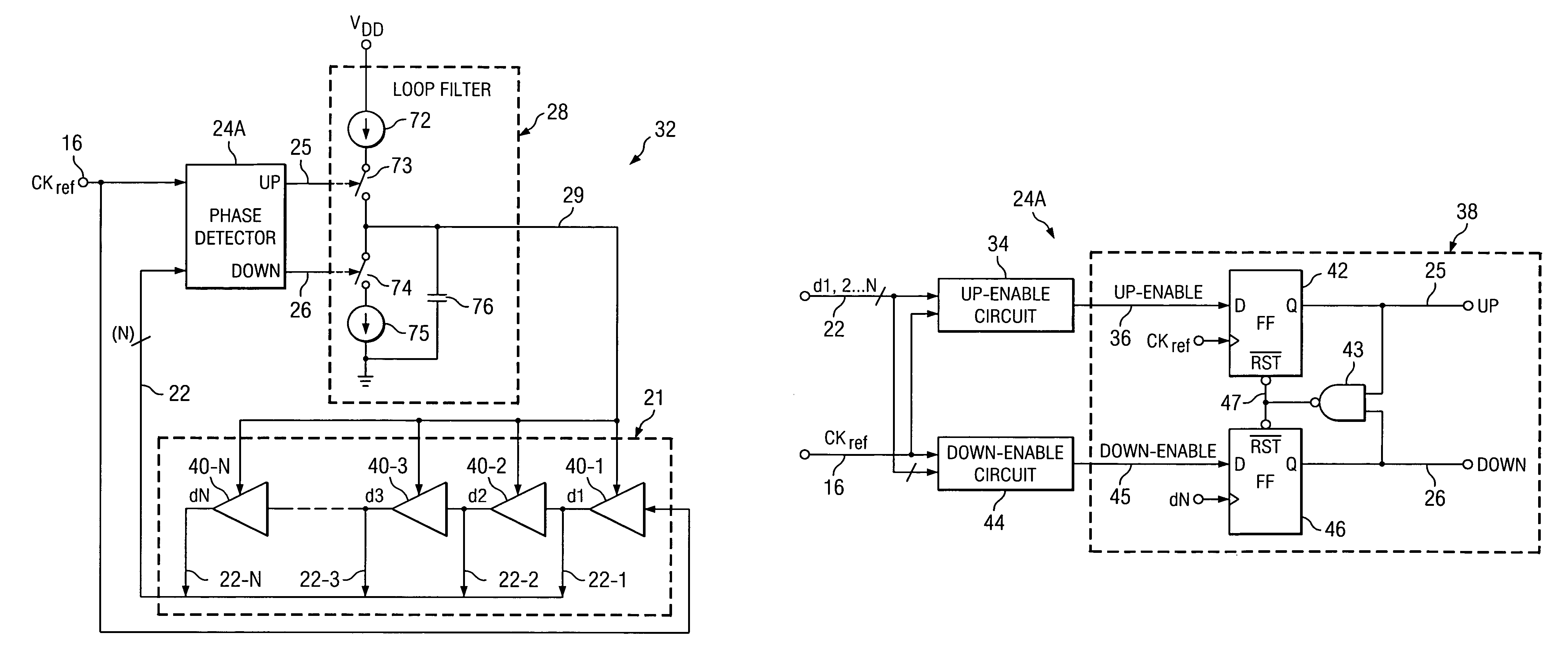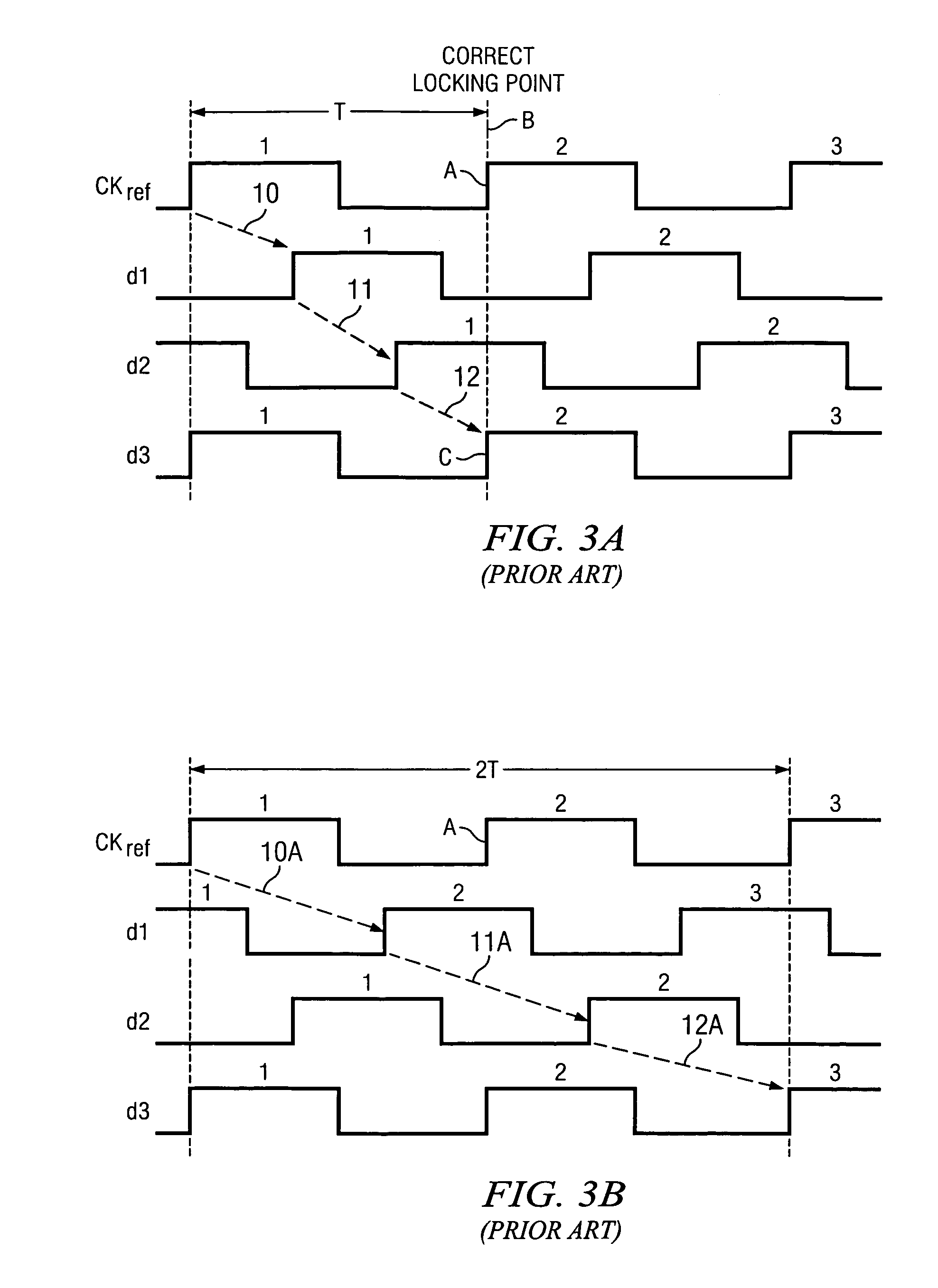False-lock-free delay locked loop circuit and method
a delay lock and loop technology, applied in the field of false lock-free delay lock circuits, can solve the problems of compromising the “robustness” of the loop operation described in u.s. patent no. 6,239,634, and monitoring circuitry and associated correction circuitry designed for use in conjunction with a particular delay line usually would not be usable for a different delay line having a different number of delay cells without extensive modification
- Summary
- Abstract
- Description
- Claims
- Application Information
AI Technical Summary
Benefits of technology
Problems solved by technology
Method used
Image
Examples
Embodiment Construction
[0044]The present invention solves the above mentioned problems of the prior art by building more capability into the phase detector of a DLL circuit. Instead of comparing only the output of the last delay cell of the delay line with the reference clock signal CKref, a plurality of or all of the delay cell output signals are provided as inputs to the phase detector. This allows it to utilize information regarding the status of propagation of a pulse of the reference clock signal CKref through the delay line in a way that avoids sustained false-lock conditions.
[0045]Referring to FIG. 4, a false-lock-free DLL 32 includes the same delay line 21 and loop filter circuit 28 shown in “prior art”FIG. 1. False-lock-free DLL 32 includes a phase detector 24A having its clock input coupled to CKref. As in prior art FIG. 1, delay line 21 includes N delay cells 40-1, 40-2 . . . 40-N, wherein each delay cell includes a delay control input connected to delay control conductor 29. The outputs of del...
PUM
 Login to View More
Login to View More Abstract
Description
Claims
Application Information
 Login to View More
Login to View More - R&D
- Intellectual Property
- Life Sciences
- Materials
- Tech Scout
- Unparalleled Data Quality
- Higher Quality Content
- 60% Fewer Hallucinations
Browse by: Latest US Patents, China's latest patents, Technical Efficacy Thesaurus, Application Domain, Technology Topic, Popular Technical Reports.
© 2025 PatSnap. All rights reserved.Legal|Privacy policy|Modern Slavery Act Transparency Statement|Sitemap|About US| Contact US: help@patsnap.com



